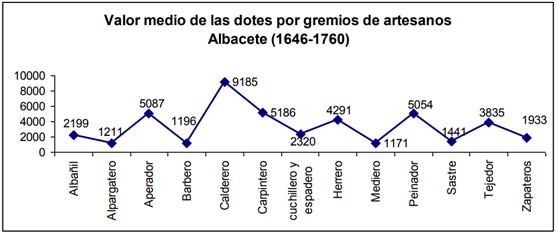
Between the end of the Middle Ages and the beginning of Modernity, the town of Almazora had a low population despite being a considerable centre of agricultural resources. The decreasing trend since the late Middle Ages can be observed through the tax records known as “llibres del morabatí” (morabatí books); a tax that the wealthiest family units (focs) paid every 7 years. According to these records, the population decreased in proportion to the instability of the area. From the general period of population loss between 1373 and 1529, there were two distinct phases. The first corresponds to the end of the 14th century until the first years of the 15th century. The second phase began in the 1420s with an abrupt decline until it recovered slightly at the beginning of the 16th century. These demographic dynamics are in line with those of the region: Castellón, Onda, Villarreal and Burriana show similar behaviour.
Collection: Graphics
Project: 3. Rural world and urban world in the formation of the European identity., 4. Family, daily life and social inequality in Europe.
Chronology: XIV, XV, XVI
Scope: Secondary Education, Baccalaureate, University
Link: http://torrello.museum.almassora.es/mura/07_mura_1997_51-71.pdf
Resource type: Graph
Format: Line chart
Source: Igual Luis, D. (1997). “Mobilitat poblacional i activitat econòmica a l’Almassora medieval”, La Murà. Revista del Museu Municipal d’Almassora, 1 (Almazora, 1997), p. 53.
Language: Valencian
Date: 1997
Owner: Pablo Ballesta Fernández (Modernalia)
Copyright: © La Murà: Revista del Museo Municipal de Almazora © David Igual Luís
Abstract: Demographic evolution in Almazora (Valencia) and its harmony with the region
Tags







